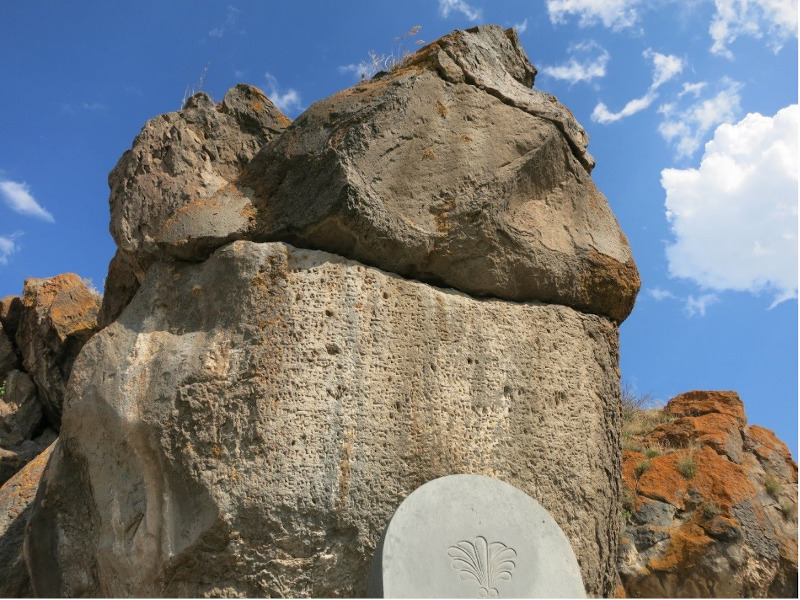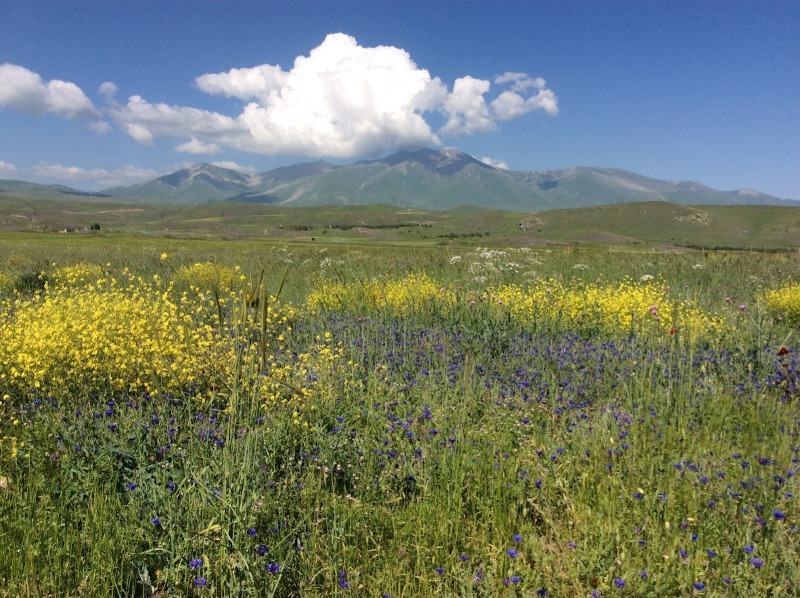
Noble Networks?: Visualizing Urartian Expansion into Adjacent Territories Using Least Cost Paths
Jane Holmstrom, 2021 Platt Summer Stipend Recipient
Lacking archaeological remains of roads used by the Urartians, we do not always have a clear idea of the routes they took to various places across the landscape. For this project, I mapped commemorative inscriptions from the Corpus dei Testi Urartei using least cost analysis and Tobler’s hiking function to important centers, including the capital of Urartu as well as other forts and fortress sites. From this I was able to visualize a potential networks of paths utilized for trade and mobility, specifically, expanding the Urartu empire into Armenia.

Urartian Stone Inscription at Tsovinar. Image credit: Tiffany Earley-Spadoni.

View of Countryside, Vayots Dzor, Armenia. Image credit: Tiffany Earley-Spadoni.
It has been really interesting, and sometimes frustrating, to learn and manipulate various tools within ArcGIS. One of the more challenging situations I faced was to figure out how to remove lakes in the region from the analysis, since our models were pedestrian. I tried a lot of ways that did not work, but eventually was able to figure out a solution, warranting an afternoon of celebration. It was also useful to read the translations of each of the stone-carved inscriptions to get a more thorough understanding of what was happening in these places during this period of time. From gaining control of an area or improving infrastructure through new buildings, canals, or vineyards, the kings were often quite boastful, while thanking or dedicating their achievements to specific Gods.
It is argued that computer-based algorithms may oversimplify mobility and omits human decision making; however, I think that a visualization component to research, even as an estimation, really adds a humanistic element to understanding ancient history. Through the mapping of least cost paths, it is fascinating to see how people potentially moved throughout the landscape and provides information that can be further explored in the field.

For more information about the Vayots Dzor Fortress Landscapes Project, click here.
During the summer of 2021, ASOR supported 27 undergraduate and graduate students through the Summer Stipend Program. These students undertook non-fieldwork archaeological research projects led by ASOR-affiliated project directors. They also took part in monthly cohort group meetings hosted via zoom. Read a summary of these cohort meetings here.
Stay tuned for more updates from the 2021 Summer Stipend recipients!
American Society of Overseas Research
The James F. Strange Center
209 Commerce Street
Alexandria, VA 22314
E-mail: info@asor.org
© 2023 ASOR
All rights reserved.
Images licensed under a Creative Commons Attribution-NonCommercial-ShareAlike 4.0 International License
COVID-19 Update: Please consider making payments or gifts on our secure Online Portal. Please e-mail info@asor.org if you have questions or need help.